Tribal Tigers
First published in Sanctuary Asia,
Vol. 39
No. 4,
April 2019
By Sahil Nijhawan
The Prelude
It was March 2012. I was in the Lower Dibang Valley district of Arunachal Pradesh conducting surveys for a renowned conservation organisation to determine tiger presence outside Protected Areas of Northeast India. “If you want to find a lot of tigers, you must go high up in the mountains. In our culture, tigers live on tall mountains," said an Idu Mishmi elder as I sat in his hut close to Roing town, the headquarters of the Lower Dibang Valley. I nodded, as you do when dismissing someone, politely. I was well versed in tiger ecology and knew that ‘a lot of tigers' didn't, and couldn't, ‘live on high mountains'. During my years in graduate school and then as a conservation practitioner, I had firmly believed, backed by hard data, that tigers were a conservation dependent species that survived when governments and NGOs, like the one I worked for, put in active measures to protect them. There were no tiger reserves in the area, no guards and the nearest sizeable tiger population was more than 400 km. away in Assam's Kaziranga. Surely the ‘tigers' that the Idu elder was talking about were either fictional or unfortunate remnants of a past population.
A few months later news arrived that two tiger cubs had been rescued from a dry well in a village close to Anini about 250 km. north of Roing towards the international border with Tibet. In December that year, with my local mentor, Jibi Pulu (whom I lovingly call Naba Jibi, Naba means father in Idu language), an exceptionally charming and eloquent English-speaking middle-aged Idu man, I spent 10 days asking numerous villagers about tigers. Most reported having seen the animal or its signs. We found tiger pugmarks from river valleys at 1,800 m. up to steep mountain slopes at 2,700 m. - ‘high up in the mountains - just like the Idu elder had suggested months ago. How many tigers lived in the rugged temperate forests of these frontier villages? More importantly, why were these tigers even there? Who was protecting them? Dibang Valley lies next to China, arguably the largest consumer of tiger parts, and it is widely-known that tigers exist in very low numbers in designated tiger reserves in the Northeast like Namdapha, Kamlang and Dampa. My incredulity was met with an even more curious response by Naba Jibi, “In our culture, tigers and Idus are brothers. We cannot kill them." Was it simply a folktale or had the Idu culture protected the world's largest and most threatened feline? I knew I had to return.
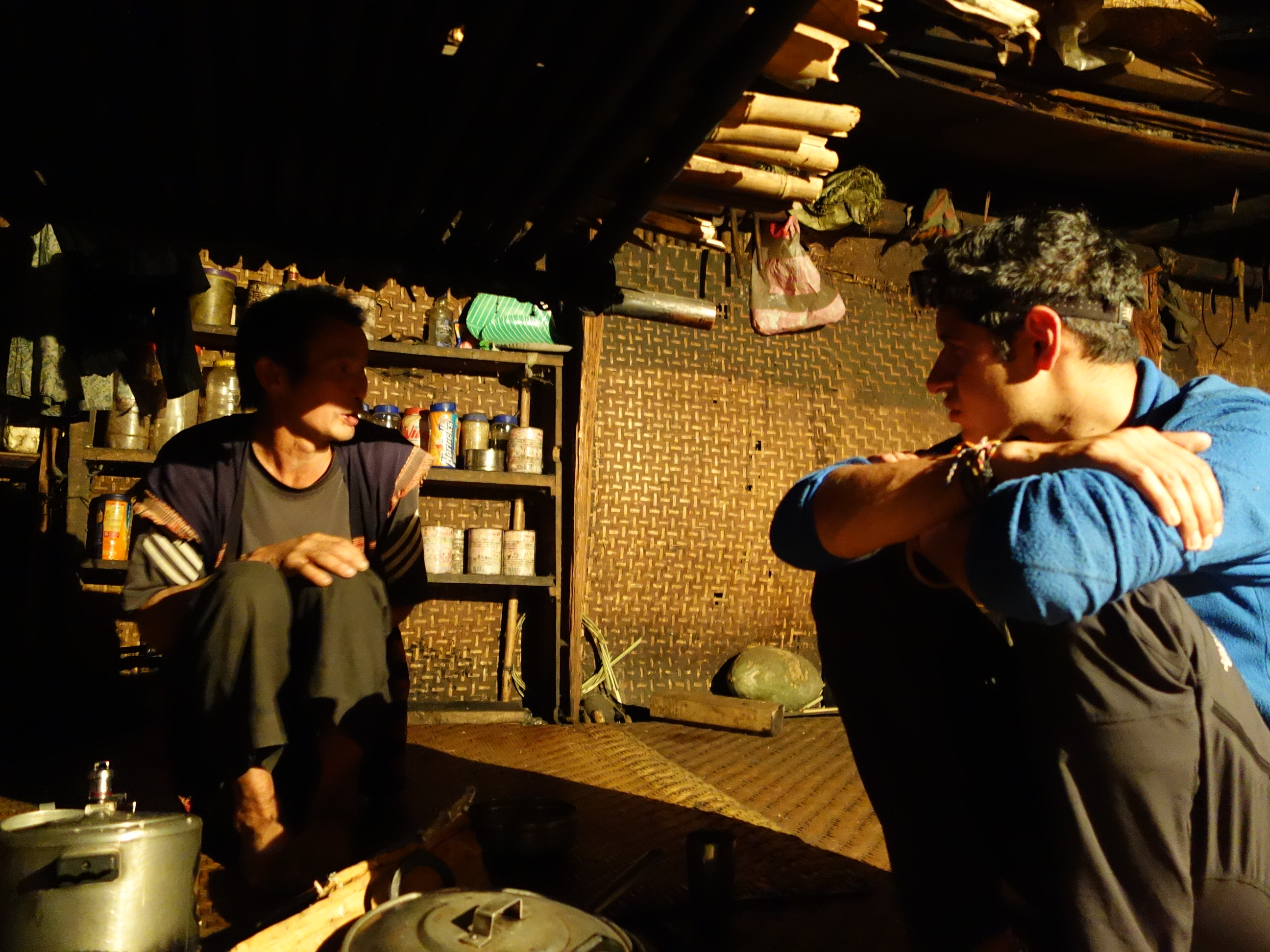
The author (right) tied his study of tiger ecology with anthropology to understand the local socio-economic situation, forest use, and people's perceptions around tigers. He lived among the Idu families and worked closely with them. Photo: Ambika Aiyadurai.
The Methods
A year later, I was back in Dibang Valley armed with 100 automatic camera traps, a white Tata Sumo and some heavy-duty tents (which later became redundant as we began sleeping in caves and bamboo shelters much like generations of Idus before us). The tigers and the relevance of Idu-tiger ‘brotherhood' for their conservation were now the focus of my Ph.D. research. However, there was a major problem. There was no prior systematic large-scale study of wildlife or Idu culture in Dibang Valley - no baselines whatsoever! I tightened my belt and over the next two years (2013-15), combined ecology and anthropology to understand the Idu-tiger nexus. To study tigers and their prey, I deployed camera traps in nearly 220 locations and collected fecal samples. My local guides (usually the customary owners of their respective forests) and I would spend the day placing cameras; while in the evenings, as we huddled around the fire to keep warm, I tried to learn the Idu language - 20 new words a day. My repeated inability to correctly pronounce Idu tones made me the butt of everyone's jokes. I lived with Idu families, participated in local festivals, and helped with domestic and farm chores in order to understand daily interactions with nature. I spent time with Idu shamans (priests) to learn Idu mythology, customs and belief system. Over time, as I became conversant in Idu, I conducted hundreds of interviews to understand the local socio-economic situation, patterns of forest use and ideas around tigers.
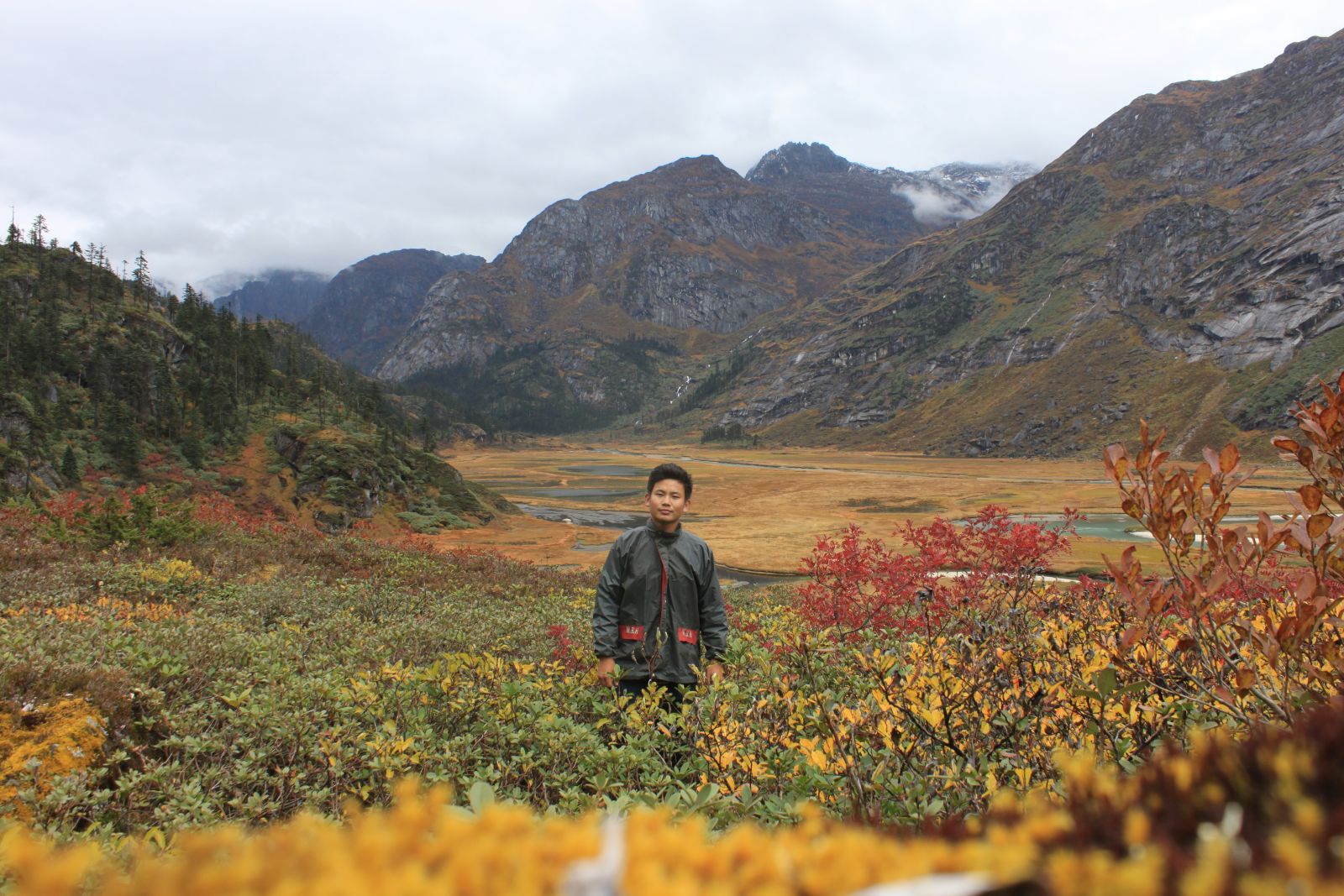
Iho Mitapo, a dynamic, young Idu Mishmi whose support was indispensable in the field. His commendable commitment towards defending the biodiversity of the Dibang Valley earned him the Sanctuary Young Naturalist Award 2018. Photo: Sahil Nijhawan.
The Idu Mishmi
Idu Mishmis are one of the 26 recognised indigenous communities of Arunachal Pradesh and Dibang Valley is their ancestral homeland. Dibang Valley is an unending expanse of dense green mountains broken only sporadically by snow-covered peaks dotted throughout its enormous geography. In Arunachal Pradesh, unlike the rest of the country, land and forests are under the de facto ownership of local people while the Forest Department controls a meagre percentage of land. Each Idu village has exclusive rights over its mountains and forests. Within the village land, each family has its own forest land while some of it is communally owned. Ownership rules are strictly enforced and without the owners permission, Idus do not go into forests that are not theirs. Idus are predominantly animists. Traditional animists believe that non-humans such as animals and spirits have the same capacities of conscious decision-making as humans do. The world of the animists is full of good and bad spirits. To survive and prosper, one must ensure that these spirits are appeased with the help of a shaman who is the only one able to communicate with spirit and animal worlds. In the very north of the district, along the Tibetan border, lies Dibang Wildlife Sanctuary (DWLS), which is eight times as big as Corbett National Park but has fewer than 10 Forest Department staff. There are plans to tap the rivers of Dibang Valley in nearly 17 hydropower dams, a few of which would be amongst the largest dams in India.
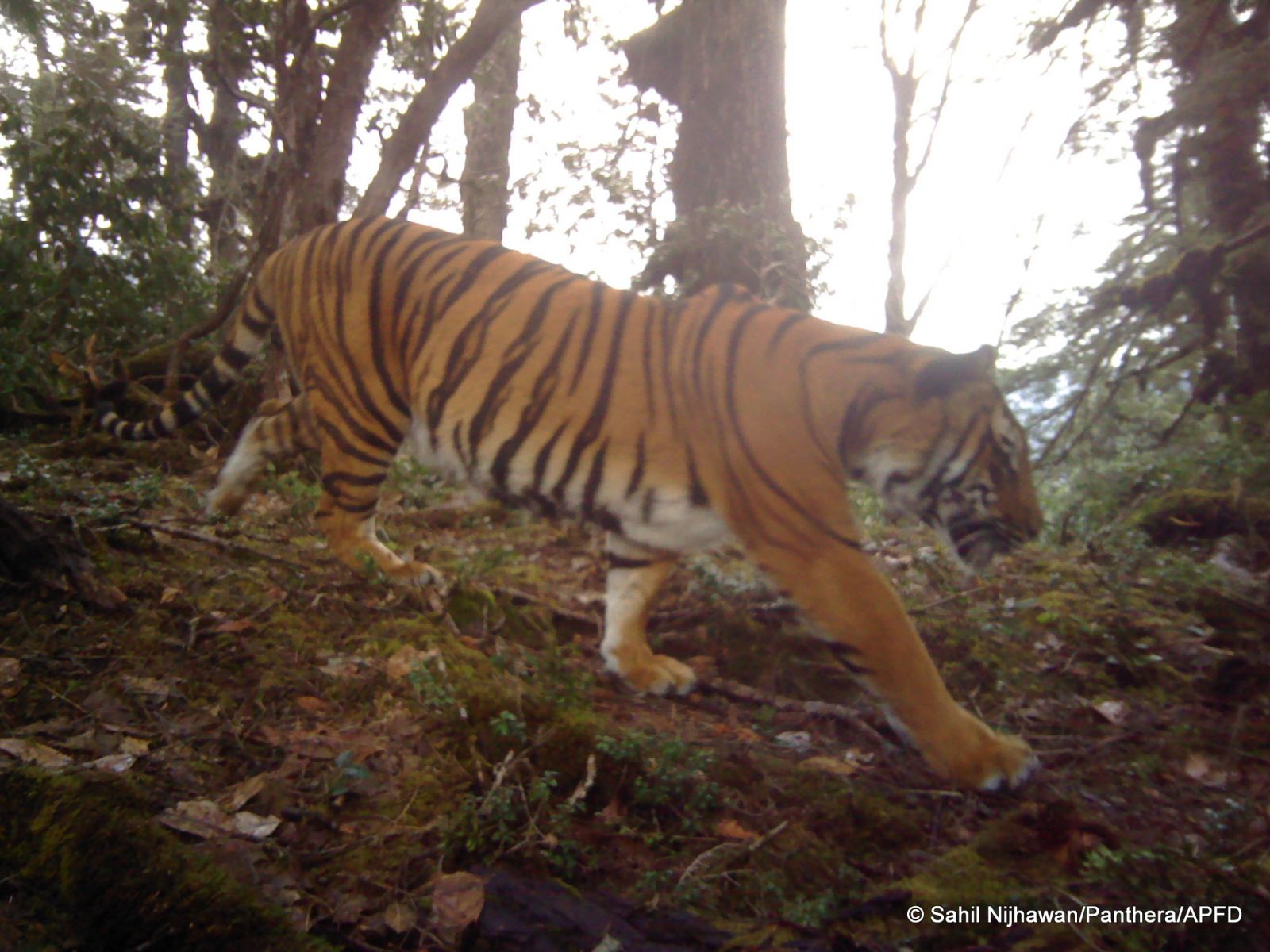
The Idu Mishmi tribe's poignant cultural practices and beliefs have ensured the survival of the tiger and its habitat in the Dibang Valley in Arunachal Pradesh. Photo: Sahil Nijhawan/Panthera/APFDPhoto: Sahil Nijhawan/Panthera/APFD
The Tigers
I placed camera traps from tropical forests around 500 m. all the way to alpine meadows at 3,700 m. in altitude. About half of these were stationed in two valleys inside DWLS while the rest were in Idu-owned forests. The cameras captured an astounding diversity of animal life - 30 different species of mammals including clouded leopards, wild dogs, red pandas, golden cats and seven species of pheasants! Many more species were encountered in community forests than in DWLS. Twelve individual tigers were photo-captured - eight adults, two sub-adults around one-year-old, and two young cubs (under three months). An astounding eight of these tigers (six adults and two sub-adults) were found living in Idu-owned forests. Surprisingly, cameras captured no photographs of tigers in one of the valleys inside DWLS. I had only begun to scratch the surface as my cameras covered less than 10 per cent of Dibang Valleys forested mountains. Advanced statistical analyses indicated that there could be as many as 50 adult tigers in Dibang, up to 90 percent of which would live in Idu-owned forests. Unlike in the rest of their range, these tigers relied on a unique prey assemblage with two species of muntjac (Indian and Gongshan) making up most of their diet followed by mithun (a semi-domesticated form of gaur owned by the Idu), Himalayan serow and the Mishmi takin- a bizarre furry wildebeest-like mountain goat endemic to the eastern Himalaya.
They say tigers are the pulse of the forest - if tigers do well everything else does well too. Yet, I was curious to know how the tiger prey was faring. I used a novel method based on gas collision theory (developed by the physicist James Clerk Maxwell in 1860) to count the tiger's prey animals using camera traps. Results confirmed that Dibang Valley had just as many muntjac and wild pigs as other strictly protected tiger reserves. Dibang Valley indeed acted like a ‘well-guarded tiger reserve, except that there were no forest guards, systematic patrols, government funding, Tiger Conservation Plans, eco-resorts or tiger-tourists. The tiger, its prey and its habitat were protected in Dibang Valley by Idu culture, which in turn has been safeguarded by Arunachal's Inner Line Permit, a legal instrument that prohibits the influx of non-locals.
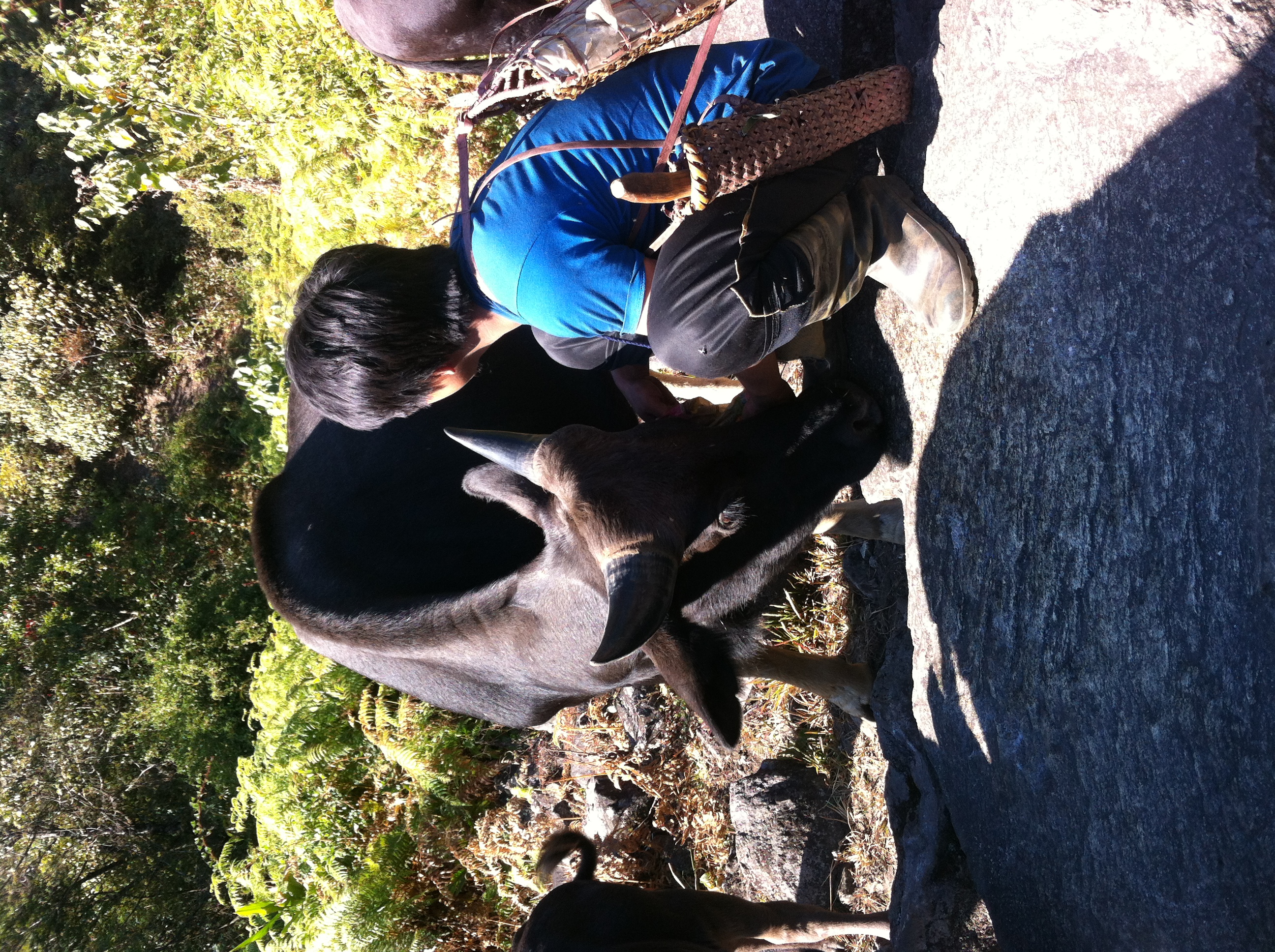
Photo: Sahil Nijhawan.
The Brotherhood
While the outside world may have just ‘discovered' tigers in Dibang Valley, the Idu Mishmi have for centuries known of and lived with tigers. That Idu and tigers are brothers is an ‘indisputable fact every adult Idu knows without fail. Idu children grow up on the story of ancestral brothers born to the same mother - the first Idu, from whom all Idus descend, and the tiger. A disagreement resulted in man conspiring to kill his brother. The creators rebirthed the tiger and sent it to the ‘tall mountains, away from his brothers villages, where it lives to this day. But the wilfull killing of the tiger by his own brother, an act of murder that spilled the blood of one's own kin, unleashed the misfortunes and diseases that still haunt the Idu. The two live separate lives however, the tiger does occasionally descend into his human brothers' villages in the lower mountains to steal his prized cattle, mithun, creating tense confrontational situations. Tiger killing of mithun is not mere livestock depredation; it is a re-enactment of the ancestral myth that intertwines man and tiger. Livestock depredation may be seen as a sign of conflict everywhere else in India, but for the Idu, it is a complicated matter. Despite the financial, emotional, spiritual and psychological stress, Idu beliefs concerning tigers prevent widespread and immediate retaliatory killing - elsewhere, a significant cause of tiger deaths.
For the Idu, the tiger has many meanings. It is an animal that lives in the forest, is feared, and kills mithun and it is the mythical brother who must not be killed, yet again. The Idu shaman is believed to have a tiger spirit that heals people. It is the shaman (along with his spirit-tiger) who brings children into the world and makes them ‘Idu', and lays the dead to rest. Even though Idus are increasingly linked to the outside world through western education and globalisation, shamans still hold a key position in the society. The Idu need the shaman, the shaman in turn depends on the tiger. Whilst the Idu fear the tiger and do not ever want to confront one, it forms an integral part of their identity.
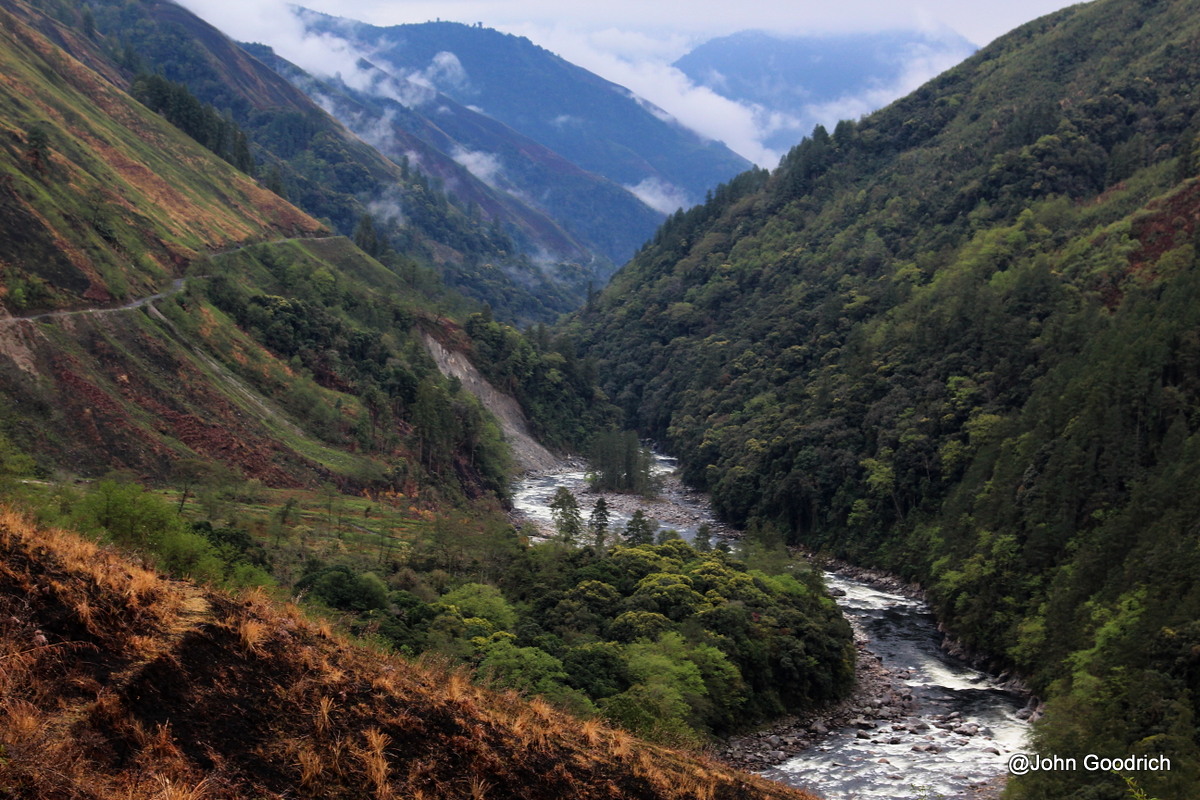
Photo: John Goodrich.
The Interconnected Futures
The Idu-tiger nexus is an example of a socio-ecological system where the two are co-dependent; their history, ecology, culture and destinies intertwined. The story of either one is incomplete without the other. It was therefore a severe shock to me as well as to the Idu Mishmis, when the Wildlife Institute of India's (WII) recent publication on Dibang's tigers made no mention of the Idu-tiger relationship or Idu Mishmis in any meaningful way. What makes these tigers truly unique isn't just that they are such formidable mountaineers, but the very reason for their existence in Dibang Valley - the Idu Mishmis themselves! Most Idus I spoke with were well aware of the value of tiger parts in illegal markets, but they would not kill tigers for the fear that it might invoke the ancestral curse of death and destruction. But for this cultural link, tigers in Dibang Valley would have long met the same fate as those in Sariska, Panna, and several reserves in the Northeast where organised poaching gangs took advantage of people's antagonism towards the Forest Department, not the forest or tigers.
Against this backdrop, the Idu-tiger story is a cause for celebration. It raises immense hope and urges us to look beyond one-size-fits-all models for saving tigers in a country as diverse as ours. It challenges our existing ideas of human-wildlife ‘conflict, who is best positioned to ‘protect tigers and where. Generations of wildlife researchers and practitioners have been trained in simplistic, yet flawed, ideologies that most find it difficult to conceive of endangered wildlife, particularly tigers, existing outside national park boundaries (I, for one, held similar views at the onset of this research). WII scientists headed directly for DWLS to place camera traps based on the unchallenged belief that it would be the best area for tigers, disregarding the obvious existence of the unbroken expanse of forest all around DWLS, because those forests were ‘unprotected. Yet, their own study found India's highest tigers in community-owned forests, not in the ‘protected sanctuary.
|
Conflicting Science, Conflicting Stories
In November 2018, the Wildlife Institute of India (WII) published results of a camera trapping study of tigers, which concluded that the Dibang Wildlife Sanctuary held the highest-living tigers in India. In response to reports that the sanctuary might be declared a tiger reserve based on the study's findings, the Idu Mishmi Cultural and Literary Society (IMCLS), the premier group representing interests of the Idu people, wrote a letter to the National Tiger Conservation Authority (NTCA) and Chief Conservator of Forests, Arunachal Pradesh. In the letter, they asserted that WII's publication and the ensuing media reports only tell half the story and that too, with some vital omissions and misrepresentations. The letter argued that the publication:
1) leaves out the fact that photo-captures of tigers at higher altitudes of 3,246 and 3,630 m. occurred outside the sanctuary and in community-owned forests.
2) makes no mention of how many tigers were photographed inside vs. outside the sanctuary.
The letter, quoting Dr. Sahil Nijhawan's research, explained that nearly 65 per cent of Dibang Wildlife Sanctuary is above 3,500 m., which is the tree line in the region. Even though tigers may sometimes venture close to 4,000 m., these high elevations are unlikely to host tigers, or their primary prey, permanently. The tigers' most important wild prey in Dibang Valley - muntjac and serow - typically do not range above 3,000 m., while its domestic prey, mithun, is not found inside the sanctuary. Their largest wild prey, Mishmi takin, migrate seasonally spending nearly half the year in the higher mountains and the rest in lower elevations. Male tigers are known to travel long distances and, occasionally, to higher elevations in pursuit of takin. Females, however, particularly those with cubs, hold steady prey-rich home ranges in lower-mid elevation forests (1,500-2,500 m.), majority of which are community-owned. The male tigers that WIIs researchers photo-trapped at the 3,630 m. and 3,246 m. depend inextricably on the forests in lower hills owned by the Idu Mishmi. Notwithstanding its large size, Dibang Wildlife Sanctuary's highland geography makes it insufficient to hold enough tigers on its own to sustain a viable population.
The letter continues, “we believe that just because tigers are ‘discovered in a place, does not mean it must be declared a tiger reserve without understanding how and why those tigers have survived. We strongly believe that the right strategy for Dibang tigers would be to develop a new kind of tiger reserve that is built not with fences and armed patrol guards, but around a cultural model, a culture which has so far proven to be effective in saving the tiger. We have a real opportunity here to set the stage for a new tiger conservation paradigm; one that is grounded in the Indian constitutions mandate for Arunachal Pradesh - local tribal autonomy and sovereignty - and is based upon strengthening local cultural values." They demanded that the NTCA and state government must work with the Idu Mishmi in order to develop locally relevant measures to ensure that tigers continue to thrive in Dibang Valley. The letter concludes by highlighting the dangers of basing policy on incomplete and half-truths, “such a policy may either fail to deliver its intended results, or, as experiences from other parts of the country suggest, can be potentially destructive to the tigers it aims to protect."
|
If and when DWLS is declared a tiger reserve, it will surely exclude Idus from their ancestral land, but it is unlikely to keep the tigers in, or from occasionally preying upon mithun. However, instead of Idu culture and shamans mediating temporary episodes of conflict between people and tigers, the Forest Department will be held responsible. This will, at best, convert the Idu-tiger relationship into a monetary transaction via ill-designed compensation programmes. At worst, it will create a situation of perpetual enmity between Idu and the tiger which the culture is no longer able to encompass and explain. How long can the ‘Idu tiger' survive when it officially becomes the ‘Indian tiger' remains to be seen. So far, the tigers have thrived without outside intervention. Sometimes, the best thing is to not meddle.
(First published in: April 2019)

